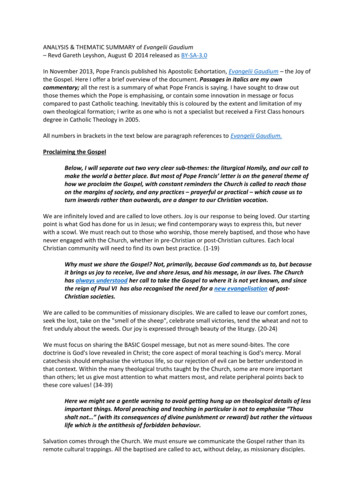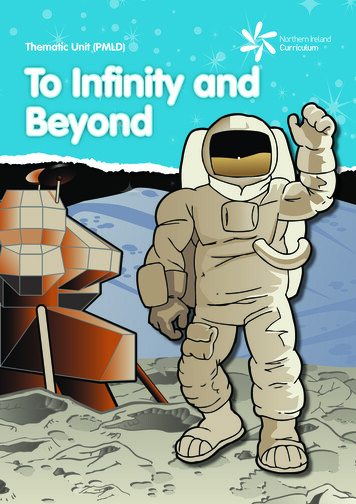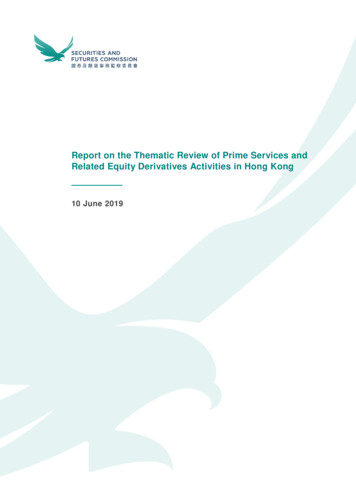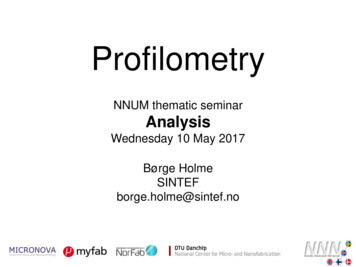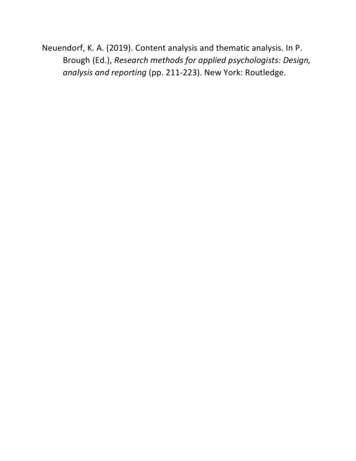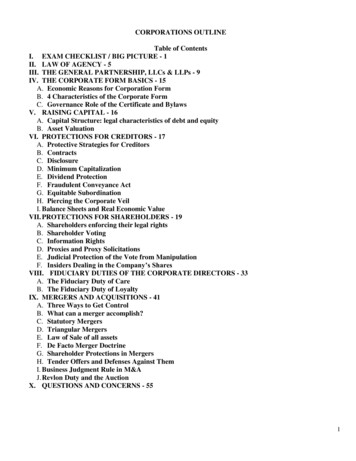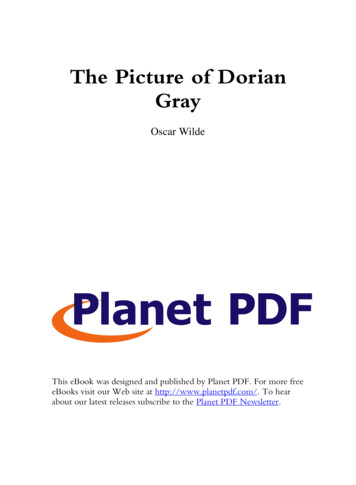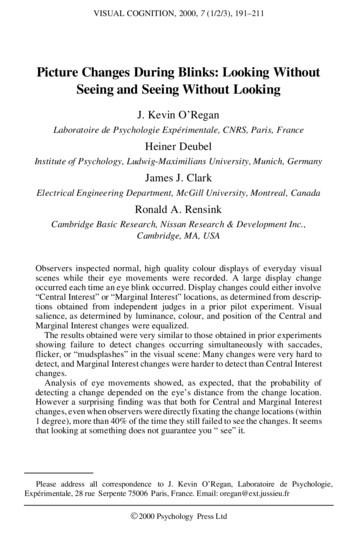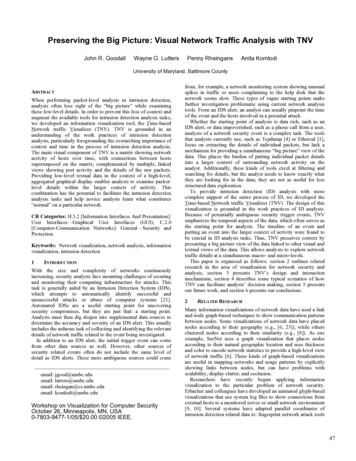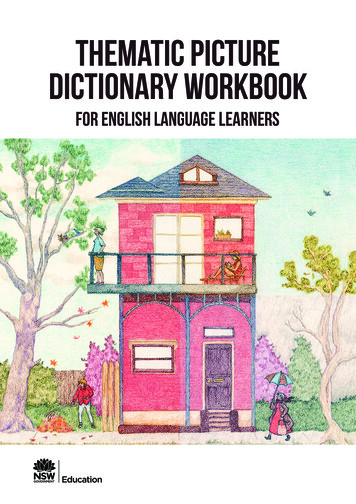
Transcription
THEMATIC PICTUREDICTIONARY WORKBOOKFOR ENGLISH LANGUAGE LEARNERS
State of New South Wales (Department of Education) 2019Illustrations Dinalie Dabarera 2015RESTRICTED WAIVER OF COPYRIGHTThe printed material in this publication is subject to a restricted waiver of copyright to allow the purchaserto make photocopies of the material contained in the publication for use within schools or institutes subjectto the conditions below.1.All copies of the printed material shall be made without alteration or abridgement and must retainacknowledgement of the copyright.2.The school or college shall not sell, hire or otherwise derive revenue from copies of the material,nor distribute copies of the material for any other purpose.3.The restricted waiver of copyright is not transferable and may be withdrawn in the case of the breachof any of these conditions.ACKNOWLEDGEMENTSThe illustration on the cover of the Thematic Picture Dictionary Workbook for English Language Learnerswas created by Dinalie Dabarera.For further information contact multicultural.programs@det.nsw.edu.auISBN: 0 7313 8742 2SCIS: 1744875
How to use theThematic Picture DictionaryWorkbookThe Thematic Picture Dictionary Workbook for English Language Learners (Workbook)is a literacy resource for students who are in the early stages of learning English as anadditional language or dialect. The Workbook is a companion to the Thematic PictureDictionary for English Language Learners (Picture Dictionary) and uses that publicationfor its visual text material.The units of work in this publication follow the sequence of themes in the PictureDictionary but on occasion more than one theme is covered in a single unit of work.The commonly encountered vocabulary in the Picture Dictionary has been used as thebasis for the reading texts found at the beginning of the units of work. The pictures weredrawn to illustrate single words and do not necessarily depict the scenes found in thetexts. Reading exercises should be completed after the vocabulary has been taught andteachers will need to guide students to an understanding of the text.English language occurs when there is a social purpose. Individual activities in thisworkbook will work best when used as part of a teaching sequence rather than as standalone activities.The texts vary in difficulty and each text has been graded in relation to the ESL Scales,the Intensive English Curriculum Framework and the ESL Steps: ESL CurriculumFramework K–6, Stage 3. The levels at which students will be able to complete thereading exercises are shown above each text and are indicated by the following:ESL Scales:Level 1 lLevel 2 llLevel 3 lllLevel 4 llllIntensive EnglishCurriculum Framework:K-6 CurriculumFramework ESL Steps:FOUNDATION FSTAGE 3 BAND A1 A1LEVEL 1 1STAGE 3 BAND A2 A2LEVEL 2 2STAGE 3 BAND B BThe exercises in each unit vary in difficulty so that the teacher can choose exercisesappropriate to each student depending on their English literacy development.Simpler exercises include vocabulary recognition, alphabetical order, word and sentenceclozes, sentence matching and grammatical exercises.Writing exercises include copying text, completing formatted texts, using surveys to writeshort answers, completing sentences and completing short texts.
ContentsHow to use the Thematic Picture Dictionary Workbook. iUnit 1: School.2Unit 2: Classroom.6Unit 3: Computer.9Unit 4: Family.12Unit 5: Footwear, jewellery and underwear.17Unit 6: Parts of the body.21Unit 7: Illness and medication.23Unit 8: Food.26Unit 9: Fruit.29Unit 10: Vegetables.33Unit 11: House.36Unit 12: Kitchen and laundry.40Unit 13: Transport and communication.43Unit 14: Clothing and seasons.47Unit 15: Sport.51Unit 16: Beach.55Unit 17: Australian animals.59Unit 18: Australiana.63Unit 19: Adjectives and prepositions.66Unit 20: Measurement and shapes and solids.69Answers.73
ESL Scales: lll Intensive English Curriculum Framework: 1 ESL Steps: A2Unit 1: SchoolTurn to page 4Look at the pictures and read the text below.Deyana’s school dayIt’s 9 a.m. in the morning. The students are at school. Some students are in theirclassrooms. They are learning English. Some students are at the gym. They are doingPE. Some students are on the sports oval. They are playing soccer.It’s 9.30 a.m. Where is Deyana? She’s late for school. She has a note from her mother.She takes the note to the office. Then she goes to her classroom. Where is her class?No-one is there. She goes to the gym. Her class is not there. She goes to the sports oval.Her class is there. They are playing soccer. Deyana goes to the change room and putson her sports uniform and sports shoes. She runs onto the oval and plays soccer.At 10.45 a.m. the bell rings for recess. At 11.05 a.m. the students go back to theclassroom for lessons.It’s 12.30 p.m. The bell rings. It’s lunch time. The students walk out to the playground.Deyana goes to the canteen. She buys a sandwich. She sits under the tree with her twofriends. They eat and talk. Deyana and her friends watch some students playing handballin the playground. After lunch Deyana and her friends play handball too. It is hot today.Dejana is wearing her hat.It’s 1.15 p.m. Lunch time is finished. Deyana and her friends go to the classroom forafternoon lessons.At 3.00 p.m. the bell rings and the students go home.Exercise 12Read the text and tick True (T) or False (F) after thesentences. The first one has been done for you.TF1. Some students are learning English at 9.00 a.m. 2. Some students are playing handball at 9.00 a.m. 3. Deyana is at school at 9.00 a.m. 4. Deyana is late for school. 5. Deyana’s class is not in the classroom. 6. Deyana finds her class at the gym. 7. Deyana’s class is playing basketball. 8. The bell rings at 1.00 p.m. for lunch. 9. Afternoon lessons start at 1.15 p.m. 10. The students go home at 2.00 p.m. Unit 1: School
Exercise 2Read the text and put the right times on the clocks.1. School starts.2. Deyana takes her late noteto the office.3. Recess starts.4. Recess finishes.5. Deyana’s class goes backto the classroom for lessons.6. Lunch starts.7. Afternoon lessons start.8. School finishes.Unit 1: School3
Where are they? Read the text and finish the sentences.The first one has been done for you.Exercise 3classrooms1. Some students are studying English in their .2. Some students are doing PE in the .3. Some students are playing soccer on the.4. Deyana takes her late note to the .5. Deyana puts on her sports uniform in the.6. Deyana buys a sandwich from the .7. Some students play handball at lunchtime in the .8. Deyana’s afternoon lessons are in her .Exercise 4classroomclassRead the text again and fill in the blanks in the followingsentences. Use the words in the box below.finishessports ovallunchschoolsoccer1.15 p.m.recessDeyana is late for 1 and when she gets there she can’t findher 2 . Her class is on the 3playing 4 . After sport the bell rings for 5 .After recess Dejana and her class go back to the 6 .The students at Deyana’s school have 7 at 12.30 p.m.Afternoon school starts at 8 and school 9 at3.00 p.m.4Unit 1: School
Exercise 5Put the times on the clocks to tell us about yourschool day.I arrive at school.School starts.Recess starts.Recess finishes.Lunch starts.Afternoon lessons start.School finishes.I arrive home.Exercise 6Tell us about your school day by filling in the blanks inthe following story.My day.I arrive at school at and lessons start at .We have recess at and then we have more .The bell for lunch at . Afternoon schoolat and schoolat . I arrive home at .Unit 1: School5
ESL Scales: ll Intensive English Curriculum Framework: 1 ESL Steps: A2Unit 2: ClassroomTurn to page 5Look at the pictures and read the text below.This is a classroom. There are two groups of students in the classroom. There is awhiteboard at the front of the classroom. A screen is in front of the whiteboard. A noticeboard is on the left of the whiteboard. A data projector is in the middle of the room.There is a cupboard under the window against the wall. The cupboard is shut. Next to thecupboard there is a bookshelf. There are many books on the bookshelf.There are some things on the desks in this classroom. A calculator and a pencil case areon one of the desks near the back of the room and a folder is on another desk. A book ison the desk near the group of four students.Exercise 16Read the text and tick True (T) or False (F) after thesentences. The first one has been done for you.TF1. There is one group of students in the classroom. 2. The whiteboard is at the front of the classroom. 3. The data projector is in the middle of the room. 4. The cupboard is next to the notice board. 5. The cupboard is open. 6. The bookshelf is next to the notice board. 7. The bookshelf has a few books on it. 8. The calculator and the pencil case are on a desknear the back of the room. 9. The folder is on the floor. 10. The book is on one of the desks. Unit 2: Classroom
Exercise 2Put the following words in alphabetical xercise 3Words to look forFind these words in the grid below. Some words readdown and some words read derldmwchairbmapdempencilopencilesassflynoscreen, studentsrkpscreenkbbookshelfbook, bookshelfcalculator, chair,classroom, cupboarddeskUnit 2: Classroom7
Exercise 4Read the following text. Put in the capital letters and fullstops. Try not to look back.this is a classroom there are two groups of students in the classroom there isa whiteboard at the front of the classroom a screen is in front of the whiteboarda notice board is on the left of the whiteboard a data projector is in the middle of theroom.there is a cupboard under the window against the wall the cupboard is shut next to thecupboard there is a bookshelf there are many books on the bookshelf.there are some things on the desks in this classroom a calculator and a pencil case areon one of the desks near the back of the room and a folder is on another desk a book ison the desk near the group of four students.Exercise 58Now copy the corrected text on the lines below.Unit 2: Classroom
ESL Scales: ll Intensive English Curriculum Framework: 1 ESL Steps: A2Unit 3: ComputerTurn to page 6Read the text below.How to look after your computer Do not eat or drink near your computer. Do not put anything heavy on the computer. Turn the computer off when there is lightning. Clean the screen with a soft cloth. Turn the computer off by using the ‘Shut down’ command in the Start menu.Exercise 1Read the text and tick True (T) or False (F) after thesentences.TF1. You should not eat or drink near your computer. 2. You turn the computer on with the‘Shut down’ command. 3. You can put your books on the keyboard. 4. You should turn off the computer whenthere is lightning. 5. You can clean the screen with a soft cloth. Unit 3: Computer9
Exercise 26. able11. oni or7. ey oard12. ouse8. enu13. ower oint9. rin er14. lug10. creen15. DVD riveExercise 310Write the missing letters in the words below.Find the words above in the grid below. Some words readdown and some words read DebnacowmfoVrlynguve
The illustration on the cover of the Thematic Picture Dictionary Workbook for English Language Learners was created by Dinalie Dabarera. For further information contact multicultural.programs@det.nsw.edu.au ISBN: 0 7313 8742 2 SCIS: 1744875
